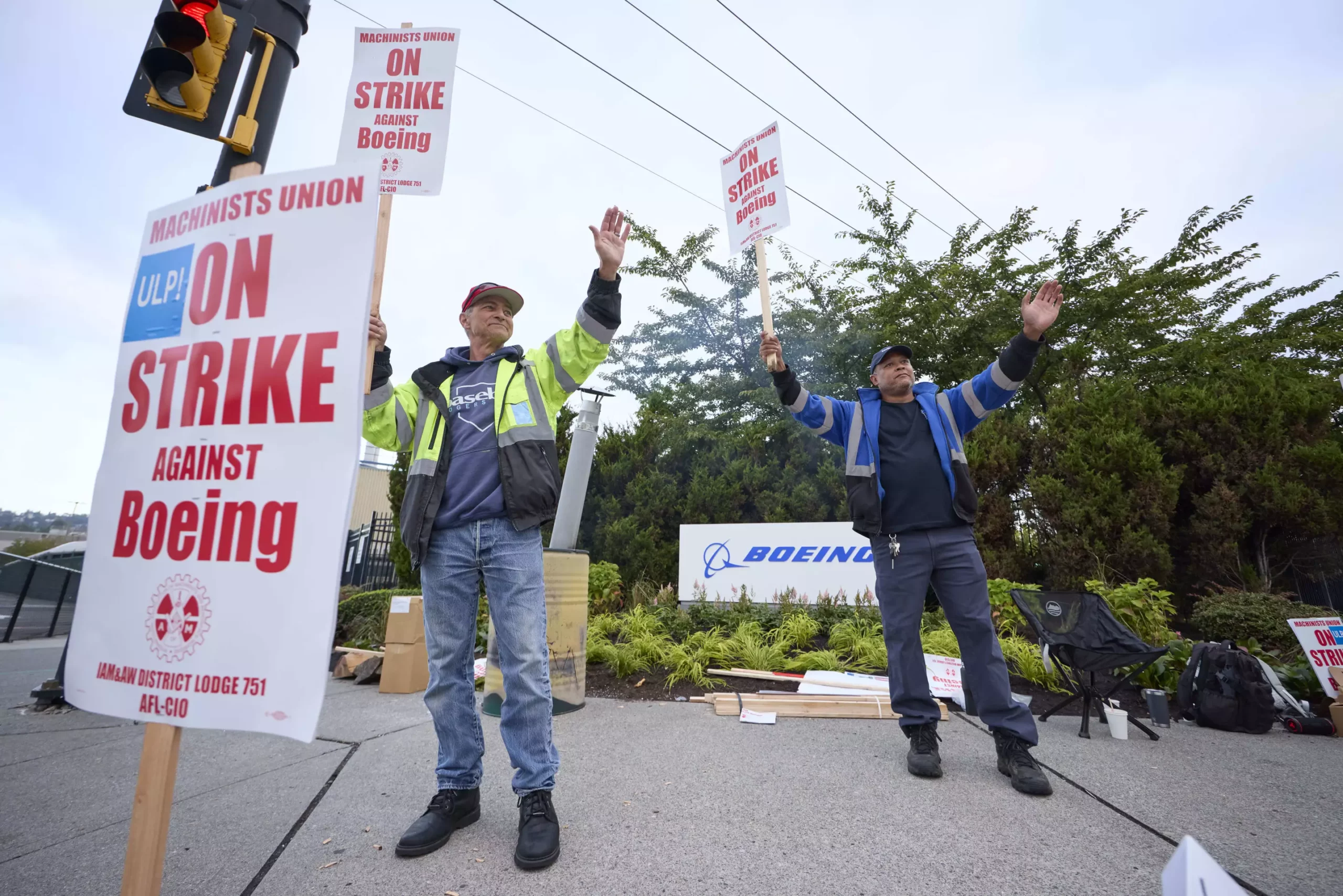In a significant labor dispute that underscores the ongoing tension between employees and management, Boeing’s blue-collar workforce has taken a stand, opting to strike rather than accept a proposed wage contract that they deemed insufficient. This move, involving approximately 33,000 members of the International Association of Machinists and Aerospace Workers (IAM), has emerged from a backdrop of financial instability within the aerospace giant and rising living costs in the Pacific Northwest. As the unionized machinists walked off the job, the implications of their actions began to ripple through Boeing’s operations and market perception.
Details of the Contract Rejection
The rejected contract was poised to deliver a 25% wage increase over four years, a seemingly decent offer at first glance. However, the union members’ overwhelming rejection—which saw 94.6% of voters disapproving the contract—reflects a deeper dissatisfaction. For workers like John Olson, whose wages had barely budged over six years, this deal did not come close to addressing the financial realities they face amid soaring living costs. Many employees felt that the proposed increases were outdated, being based on wage structures from 16 years ago that do not reflect the current inflationary environment.
The contract included additional provisions for lump-sum bonuses and reduced health care costs, but it failed to meet the union’s more ambitious demands for a 40% raise and a restoration of traditional pensions scrapped years prior. As several machinists pointed out, Boeing’s offer didn’t resonate with the struggles they face daily, leading to a nationwide spotlight on labor relations in the aerospace sector.
The Atmosphere and Symbolism of Striking Workers
As the strike commenced, the atmosphere outside the Renton factory was charged with defiance and solidarity. Workers brandished signs filled with frustration, illustrating their discontent with slogans that resonated with the broader struggles of the working class. The brigade of striking machinists, amplified by music from iconic bands, turned the picket line into a veritable rallying cry for respect and dignity in labor—a vivid representation of an increasingly vocal workforce unwilling to accept diminished standards of living.
Furthermore, the plight of these workers is symbolic of a larger trend across various industries in which employees are demanding fair compensation and acknowledgment of their contributions to company success. The scenery of protesting workers resonated not just within the confines of Boeing but also hinted at a growing wave of labor movements nationally.
As the strike takes root, its financial implications for Boeing could be severe. With a current debt of approximately $60 billion, prolonged walkouts might lead to diminished cash flow, especially since airlines typically compensate the company when new aircraft are delivered. The 2008 strike serves as a sobering reminder for executives, costing Boeing around $100 million in daily deferred revenue—a figure that, when adjusted for inflation, raises scary prospects for current operations under the banner of labor disputes.
Boeing’s leadership, particularly new CEO Kelly Ortberg, now faces the daunting task of navigating these tumultuous waters while rebuilding trust with employees. Although the company expressed willingness to return to negotiations, the rejection of an agreement that had been endorsed by its own negotiators complicates matters. The CEO’s prior attempts to engage workers directly reveal an urgency to mend relationships that have evidently frayed over years of dissatisfaction.
In the backdrop of this strike lies a crucial conversation about employee respect and the long-term viability of such labor relations. Union president Jon Holden emphasizes that core issues transcending salaries exist, especially concerning respect and acknowledgment of past sacrifices made by the workforce to safeguard jobs. The strike represents not only a fight for better wages but also an assertion of dignity and recognition within a corporate hierarchy often perceived as prioritizing profit over people.
As Boeing grapples with this labor unrest, it must listen to the voices of its employees and genuinely address their concerns through negotiations that reflect the existing economic landscape. Failing to do so could lead to continued strikes, diminishing morale, and a tarnished reputation in an already beleaguered company striving for recovery.
As the dust settles from this latest strike, Boeing faces an urgent crossroads. The company must reassess how it values its workforce if it hopes to secure a more reliable production environment and restore its former glory in the aerospace industry. For the machinists, the outcome of this labor action may well shape their future, and the trial serves as a poignant reminder of the collective power in standing against what is perceived as unjust treatment. As both sides seek a resolution, the stakes have never been higher, not merely for Boeing’s bottom line but for the livelihood and dignity of its workforce that plays an integral role in its success.


Leave a Reply